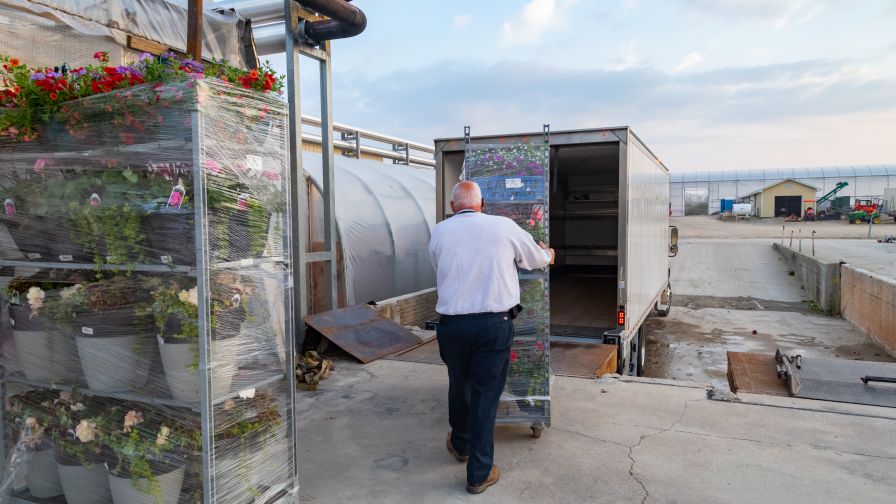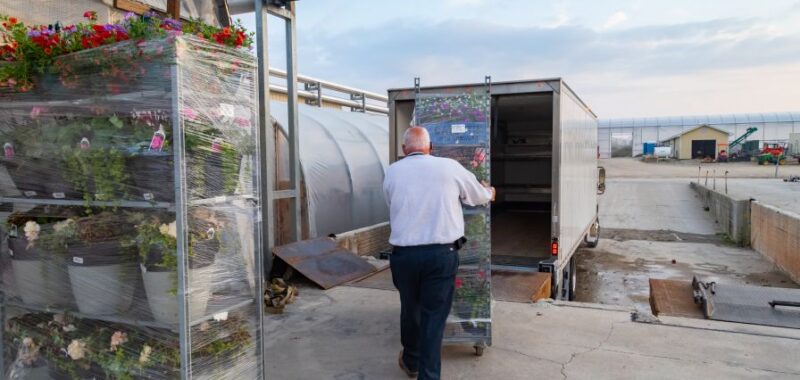
Commercial auto insurance for greenhouse delivery business | Hortica
As February 14th nears, flower growers and retailers are preparing for an onslaught of orders — and local deliveries. Whether the package contains chocolates, flowers, or a plant, consumers will spend as much as $25.8 billion on Valentine’s Day gifts this year — an average of $185.81 per person.
Grower fleets and local delivery drivers must exhibit safe driving habits to get all products to their intended recipients successfully. By championing safe driving practices, growers can protect their drivers, vehicles, and reputations. Not to mention reduce risk, including costly litigation, enhance customer satisfaction, and enhance operational efficiency.
Here are 10 habits of safe delivery drivers to help your business thrive:
1. Build out a Fleet Safety Program
A comprehensive fleet safety program is the cornerstone of reducing accidents and improving accountability. It not only safeguards drivers but also minimizes liability risks for your business. Here are the key components:
- Driver identification: Maintain an up-to-date list of all employees who drive on behalf of the business, including those using personal or rented vehicles. Many businesses underestimate their exposure to non-owned vehicle use, which can increase risks if not properly managed.
- Policies and procedures: Establish written guidelines for consistent expectations. These should include safe driving practices, protocols for reporting issues, and procedures for handling emergencies.
- Ongoing management: Regularly evaluate driver behavior through performance reviews, telematics data, and feedback from clients or colleagues. This proactive approach ensures adherence to safety rules.
- Accident management: Develop a plan for mitigating accident costs, understanding exposures, and preventing future incidents. Encourage thorough reporting and transparent investigations.
2. Hire Right
The hiring process significantly influences your fleet’s safety, and relaxed standards can lead to increased risks. Follow these best practices:
- Develop a formal hiring policy emphasizing driver safety. Clearly outline safety expectations during interviews and onboarding.
- Include safety-focused sections in applications and interviews, asking candidates about their driving experience and knowledge of traffic laws.
- Maintain thorough driver records, including driving history, medical certifications, and road test results.
- Adhere to Department of Transportation (DOT) regulations, even when optional, to exceed compliance expectations.
- Conduct motor vehicle report (MVR) checks and require drivers to self-report incidents. This ensures transparency and ongoing accountability.
- Administer road tests and familiarize drivers with your delivery vehicles before assigning them to routes. A hands-on approach helps identify potential skill gaps and build confidence.
3. Train Drivers
Continuous training equips drivers with skills to handle challenging situations and reduces risky behaviors. Implement training programs that address:
- Avoiding phone use and other distractions that lead to unsafe driving.
- Defensive driving techniques, such as maintaining safe distances, anticipating potential hazards, and adhering to speed limits.
- Rewards and incentives for consistently safe driving. Recognize and celebrate drivers who excel in safety, as positive reinforcement fosters a culture of care and responsibility.
- Integration of new safety technologies. Training sessions should include hands-on tutorials for using advanced tools like telematics, dashcams, and collision avoidance systems.
4. Avoid Distractions
Distractions are among the leading causes of accidents. Promote a culture of focused driving by:
- Keeping devices out of reach and encouraging drivers to use hands-free technology for fleets responsibly.
- Educating drivers on the risks of multitasking, such as eating or adjusting controls while driving.
- Reinforcing the importance of staying alert. Defensive driving begins with mindfulness.
5. Fleet Vehicle Inspections
Routine inspections are critical to preventing mechanical failures and accidents. Train drivers to:
- Conduct pre-trip and post-trip inspections to ensure all systems are functioning properly. Clear any snow and ice from windows and lights.
- Perform twice-daily walk-arounds to check tires, brakes, and lights. These simple habits can catch issues before they escalate.
- Document and report issues promptly for immediate resolution. Ensure drivers understand the process for escalating concerns to management or maintenance teams.
6. Maintain Vehicles Often
Well-maintained vehicles are less likely to cause delays or accidents. Schedule regular maintenance that includes:
- Checking tire pressure, fuel, and fluid levels.
- Addressing minor repairs promptly to prevent major issues. Ensure drivers are trained to recognize early signs of mechanical problems.
- Keeping detailed maintenance records for each vehicle. This not only helps track service history but also ensures compliance with safety regulations.
7. Prevent Driver Fatigue
Drowsy driving is as dangerous as driving under the influence. Encourage drivers to:
- Follow proper rest schedules for delivery drivers and avoid long hours without breaks. Implement policies that limit shift durations to reduce fatigue.
- Recognize signs of fatigue, such as difficulty focusing, yawning, or drifting between lanes, and pull over when necessary.
- Maintain a healthy lifestyle to support alertness and energy levels. Encourage drivers to get adequate sleep, eat balanced meals, and stay hydrated.
- Avoid relying on “alertness tricks” like blasting music or drinking excessive caffeine. These temporary fixes can provide a false sense of security.
8. Practice Proper Load Securing
Each year, road debris contributes to approximately 730 fatalities and 17,000 injuries. A significant portion of these incidents — 81% — are linked to unsecured loads on passenger vehicles. Train drivers to:
- Use proper cargo securing best practices, including using ropes, straps, or netting.
- Avoid overloading vehicles and balance loads evenly to prevent tipping or shifting.
- Double-check cargo before starting a trip. This simple habit can prevent costly accidents and fines.
- Understand the legal requirements for securing loads in your area. Compliance with these laws not only ensures safety but also avoids potential penalties.
9. Engage Technology
Advanced technology enhances safety and efficiency. Consider integrating:
- Dashcams: Able to monitor road conditions and driver behavior to provide valuable insights and evidence in case of incidents.
- Collision avoidance systems: Provide real-time alerts to prevent accidents.
- Telematics: Track driver behavior, vehicle performance, and location data to identify areas for improvement.
- Anti-distraction apps: Disable smartphones at certain speeds and track mileage.
- AI analysis: Generate actionable insights to improve fleet performance and predict maintenance needs.
10. Engage the Right Coverage
While not sales-focused, it’s essential to understand the importance of appropriate insurance coverage. Commercial auto insurance can help protect against:
- Bodily injuries and medical expenses
- Property damage from accidents
- Uninsured or underinsured motorists
Coverage options like liability, collision, and comprehensive policies ensure your business is prepared for unexpected incidents. Evaluate your coverage needs regularly to ensure adequate protection.
Prioritizing Safety is a Worthy Investment
Safe driving habits are a crucial investment for any business with delivery operations. By adopting these delivery driver safety tips, you’re not just reducing risks but also paving the way for seamless operational excellence and customer satisfaction.

